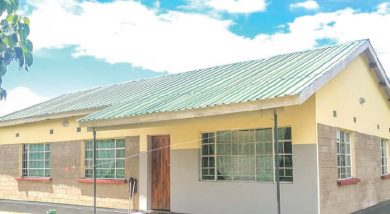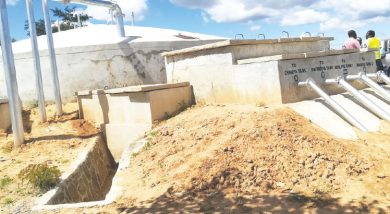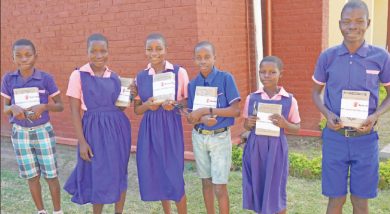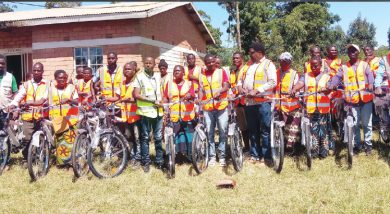Cholera knocks on flooded doors
The swelling Lake Malawi has left communities along its shoreline and the Shire River on the cusp of disease outbreaks, including cholera.
Since February this year, settlements along the country’s largest lake to those on the sole outlet up to Kamuzu Barrage in Liwonde have been flooded.
For over a month now, homes, toilets, septic tanks, rubbish pits and water points in affected communities have been underwater.
Some survivors living in the swamped Mapila location near the Shire River say the government response, especially in terms of public health interventions, remain scanty.
One of them said: “We have been in water since February when we saw water bubbling from the ground flooding our houses as it merged with overflows from the Shire River in the vicinity.
From the start, we have been seeing human waste floating in the water where children play, catch stray fish and walk on the way to school.”
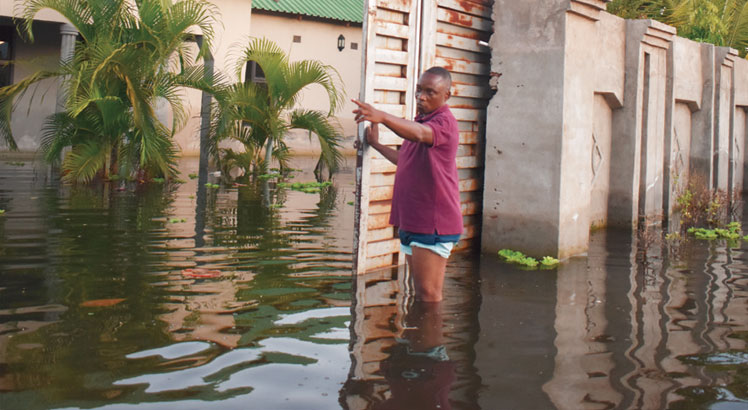
some homes in Mangochi
During a visit last week, The Nation saw some children at play and others catching fish in the stagnant flood water.
Even adults were also spotted cautiously wading through the water to the safe zones.
Concerned citizens say the swamp has become a breeding ground for mosquitoes that spread malaria.
With snails also visible in the sluggishly receding pools, worries are rising about bilharzia transmission beyond the overgrowth along the lake and the Shire River.
However, cholera is the gravest concern for many barely a year after Malawi’s deadliest cholera episode in the wake of Cyclone Ana and Gombe in 2022. It worsened with Cyclone Freddy in March last year.
The lowlands along the lakeshore were top hotspots during the outbreak that claimed 1 760 lives from about 59 000 patients.
The bacterial disease that kills within hours if not treated on time spreads through ingesting contaminated food and water.
Water for Peop le executive director Kate Harawa says timely action could avert costly infections fuelled by the neglected breakdown in access to safe water, sanitation and hygiene (Wash).
“So sad,” she said. “As Wash practitioners, we should act now instead of waiting for the first cases! We are sitting on a time bomb!”
For her, ‘prevention is better than cure’ is not a new saying.

Meanwhile, campaigners have wondered why the government and its partners are not treating the brewing public health crisis caused by the swelling lake as a matter of urgency.
Like the affected populations, they ask: Why is the Wash breakdown in the eastern region not getting the same attention and support as floods, cyclones and other disasters in other parts of the country.
“This is a ticking bomb,” says Malawi Health Equity Network executive director George Jobe. “The public health issue calls for swift action.”
The health rights defender backs calls from flooded communites for the National Water Resources Authority (NWRA) to open the Kamuzu Barrage in Liwonde to allow more water to flow down the Shire.
Said Jobe: “If the barrage has been opened appropriately and flooding persists, there is needed to engage independent water engineers to use their knowledge to help the nation.
“There should be a way to lower the water levels. Should we dig some canals to take some of the water away to irrigate crop fields?”
Suppressed relief spread along the devastated communities and resorts as the surging flow triggered the opening of floodgates at the barrage to flush about 957 000 litres per second downstream.
However, NWRA spokesperson Masozi Kasambala says this is nearly three times the 350 000 litres that can be safely released into the river.
He warned of disastrous consequences for the dynamos generating over 95 percent of the electricity for the national grid and thousands of lives in the Lower Shire Valley.
According to Kasambala, the rising levels date back to 2010 and will peak in May. However, he warned that they will not recede to the nornal level until August.
Jobe says there is no more time to waste amid rising demands for urgent action to fight back waterborne and sanitation-diseases.
Mangochi district director of health and social services Dr Henry Chibowa Jnr refused to comment on the public health threat and what the local government is doing to prevent the possible diseases outbreaks.
The medical doctor referred The Nation to district health office spokesperson Harold Kabuluzi, who confirmed the spiking risk of water-related disease outbreaks.
“We are aware that the floods from the swelling lake heighten the risk of water-related diseases, especially cholera, malaria and bilharzia.
“However, there is not much we can do apart from sensitising affected communities to how the possible diseases spread and preventive measures,” he said.
Kabuluzi encouraged the flood-stricken communities to desist from drinking the contaminated flood water, washing hands or utensils in stagnant pools and stepping in swamps barefoot.
Meanwhile, the Malawi Red Cross Society has rolled out cholera preparedness and response in Mangochi, Nkhotakota and Chikwawa, among the possible hotspots


